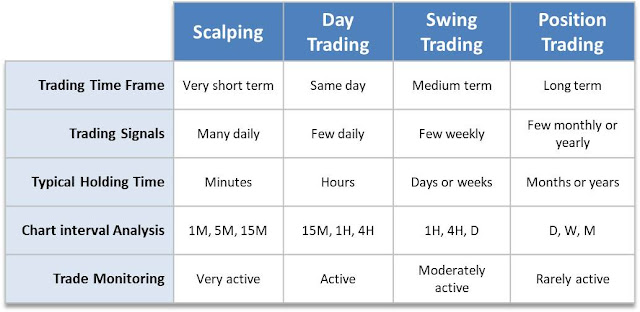Scalping
Scalping the market
usually involves high frequency trading.
The objective is to
trade very actively to make small and very frequent profits.
Traders that use this
trading style are looking to take advantage of the smallest price fluctuations
in the market. A trader or a trading robot could make hundreds of trades
per day.
Scalpers and high
frequency trading robots typically have tight stop losses and very small profit
targets.
This is your rapid
fire style of trading and the duration of trades can range from seconds to maybe
up to an hour. It depends on the technology used and market conditions.
This type of trading
is nearly all technical based and trading is usually done on sub 15 minute
charts.
Latency and price
slippage can critically affect this type of trading style. Any delays in
execution can result in a significantly worse price. Which can mean the
difference between a profit and a loss.
Scalping is also the
most sensitive to changes in liquidity and widening spreads of all the trading
styles mentioned here.
Pros
·
High number of trading
signals and opportunities to trade
·
Low time in market can
potentially reduce risk
·
Potential to make
money very frequently
·
Higher probability of
reaching profit targets because they are close by
Cons
·
High number of false trading
signals
·
Price movements may
seem more random
·
Higher probability of
price reaching the stop loss if it is close by
·
Transaction costs are
a higher percentage of profits and high in general
·
Sensitive to latency,
slippage, widening spreads and platform instabilities
·
More screen time is
required to trade and monitor and manage the trades

Comments
Post a Comment